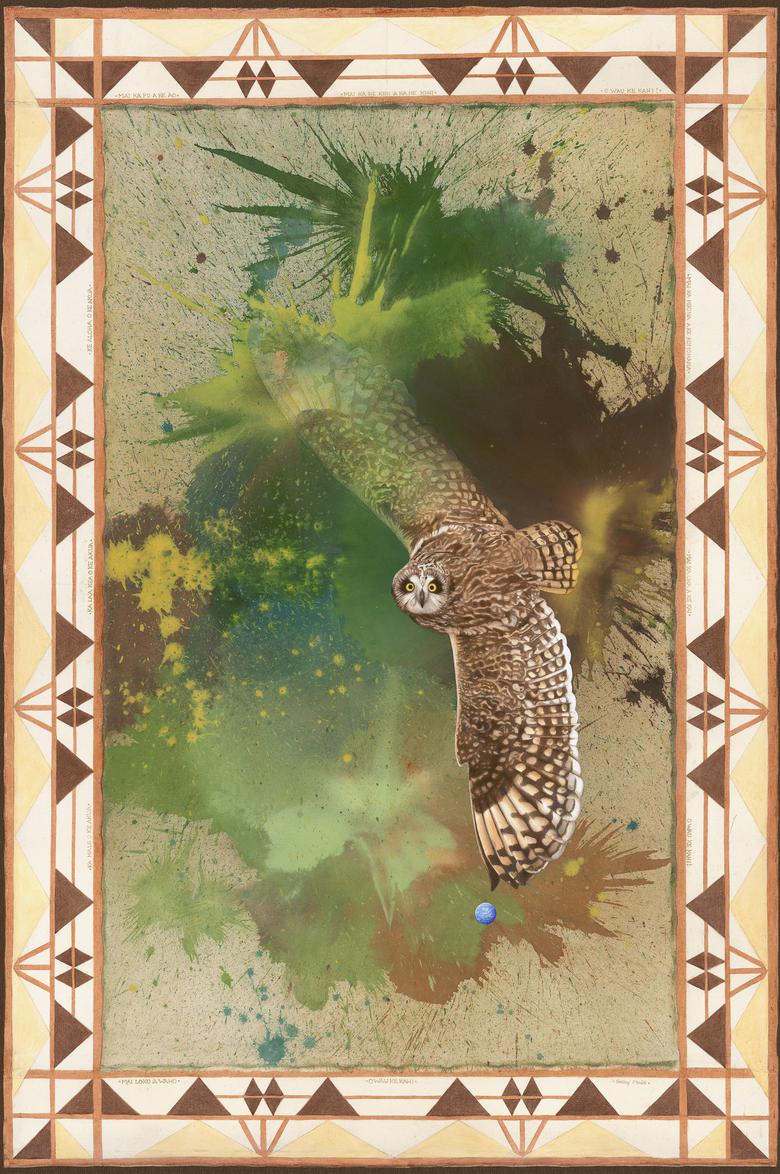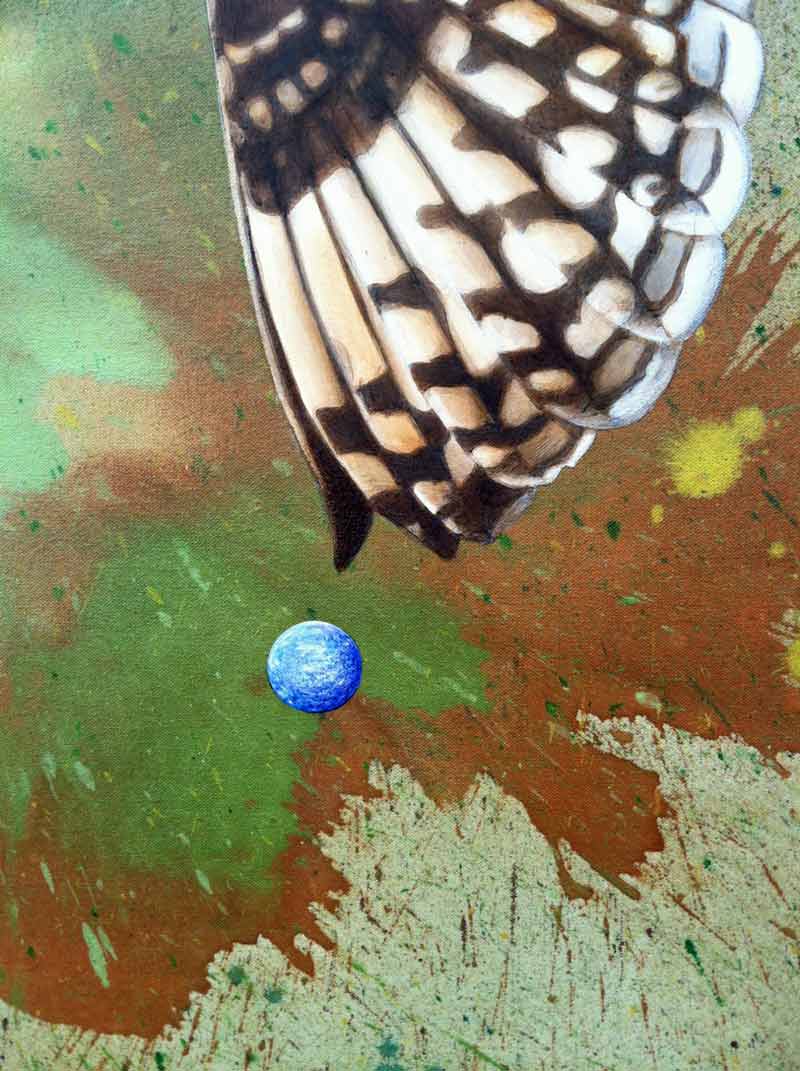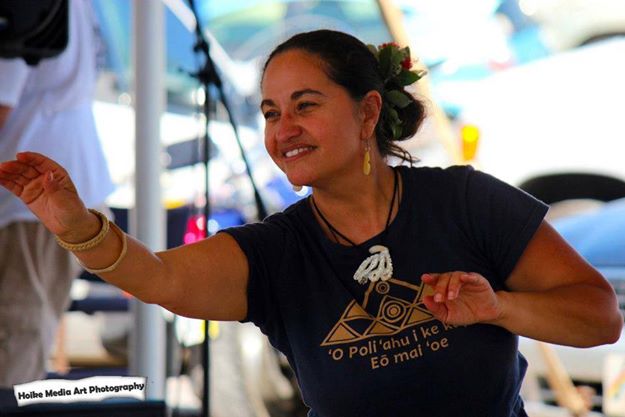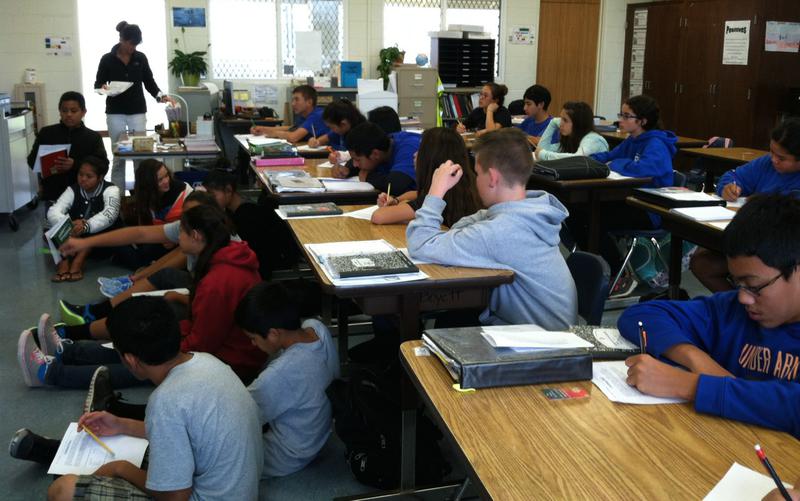An International Traveling Exhibition
by Calley O'Neill and the Rama Team, Featuring Rama, the Artist Elephant
A JOURNEY OF ART AND SOUL FOR THE EARTH
RAMA: AMBASSADOR FOR THE ENDANGERED ONES
Speaking Passionately on Behalf of Those who Cannot Speak
NA HULU KUPUNA,
AUMAKUA OF THE EARTH
by Calley O’Neill and Rama the Elephant with Jeb Barsh
 | ||||
Pueo: Asio flammeus sandwichensis,
Endemic Hawaiian Short-Eared Owl
Pueo are one of the most important and beloved Aumakua of Native Hawaiians and many local people in Hawai’i. Au means far traveling and makua means ancestors. Aumakua are considered ancestral guardian spirits or deified ancestors, healers, communicators, family guides and protectors. Aumakua are honored as part of the family. While often one specific pueo or shark, etc. is considered the aumakua, the entire species is highly regarded and protected. There is surprisingly little known about the beautiful pueo, and less known about its population and current conservation status. The kupuna say that there were huge numbers of pueo in the 1800’s.
From Hawai’i’s Comprehensive Wildlife Conservation Strategy:
SPECIES STATUS: State listed as Endangered on O‘ahu, State recognized as Endemic (found only in Hawai’i) at the subspecies level Nature Serve Heritage Rank G5/T2 – Species secure/Subspecies imperiled.
ABUNDANCE: Unknown. Because of relatively little detection, the Hawaiian Forest Bird Survey did not estimate the population size of the pueo. Pueo were widespread at the end of the, but are thought to be declining.
SPECIES INFORMATION: The pueo, or Hawaiian short-eared owl, is an endemic subspecies of the nearly pandemic short-eared owl (Asio flammeus; Family: Strigidae). The species is thought to have colonized the Hawaiian Islands sometime after the arrival of Polynesians. Unlike most owls, pueo are most active during the day (diurnal), and are commonly seen hovering or soaring over open areas. Like short-eared owls in continental environments, those in Hawai‘i primarily consume small mammals. Their relatively recent establishment on Hawai‘i may have been tied to the rats (Rattus exulans) that Polynesians brought to the islands. Little is known about the breeding biology of pueo,but nests have been found throughout the year. Males perform aerial displays known as a sky dancing display to prospective females. Nests are constructed by females and are comprised of simple scrapes in the ground lined with grasses and feather down. Females also perform all incubating and brooding. Males feed females and defend nests. Chicks hatch asynchronously and are fed by the female with food delivered by male. Young may fledge from nest on foot before they are able to fly and depend on their parents for approximately two months.
DISTRIBUTION: Pueo are found on all the main Hawaiian Islands from sea level to 2,450 meters (8,000 feet).
LOCATION AND CONDITION OF KEY HABITAT: Pueo occupy a variety of habitats, including wet and dry forests, but are most common in open habitats such as grasslands, shrublands, and montane parklands, including urban areas and those actively managed for conservation. Because of a lack of historical population data and the species’ current, broad habitat use, key habitat variables are difficult to determine. Pueo occur in many areas that are managed by the Sate of Hawai‘i or Federal agencies.
THREATS: Pueo are likely susceptible to the same factors that threaten other native Hawaiian birds, including: loss and degradation of habitat, predation by introduced mammals, and disease. However, their persistence in lowland, non-native and rangeland habitats suggests that they may be less vulnerable to extinction than other native birds, especially because they may be resistant to avian malaria (Plasmodium relictum) and avian pox (Poxvirus avium). Despite this, for pueo populations, the following are of particular concern:
- “Sick owl syndrome”. Mortality on Kaua‘i has been attributed to this syndrome, which may be related to pesticide poisoning or food shortages. (Calley’s note: Apparently ingesting rodents that have eaten rodenticides causes many pueo deaths.)
- Contaminants or toxins. Because pueo are top predators, fat-soluble contaminants may accumulate in prey species; may be related to “sick owl syndrome
- Predation. Because pueo nest on the ground, their eggs and young are vulnerable to predation by rats (Rattus spp.), cats (Felis silvestris), and the small Indian mongoose (Herpestes auropunctatus).
- Habitat loss. May be particularly important to O‘ahu pueo populations.
- Human interaction. Hunting behavior and habitat use predispose pueo to vehicular collisions, which have been documented on Lana‘i and the island of Hawai‘i.
CONSERVATION ACTIONS: Pueo likely have benefited from management activities designed to conserve other endangered birds. They also may benefit from game bird management; high densities of pueo occur on lands where game birds also are common. In addition to these efforts, future management specific to the pueo may include the following:
- Determine population trends, especially on islands where “sick owl syndrome” has been documented.
- Public outreach and education.
- Continue protection and management of wildlife sanctuaries and refuges.
MONITORING: Regular island-wide population surveys are necessary to determine population trends for this species. This information is needed to assess the efficacy of habitat management efforts.
RESEARCH PRIORITIES: Research priorities specific to pueo include the following:
- Analysis of population trends and changes in habitat occupancy, especially on O‘ahu.
- Determine the cause of “sick owl syndrome” and its potential effect on populations.
- Quantify the number of vehicular collisions and determine the level of threat to populations.
REFERENCES:
Berger AJ. 1981. Hawaiian birdlife. Honolulu: University of Hawai’i Press. 260 pp.
Holt DW, Leasure SM. 1993. Short-eared owl (Asio flammeus). In The Birds of North America, No. 62 (Poole A, Gill F, editors).
Philadelphia, (PA): The Academy of Natural Sciences; and Washington DC: The American Ornithologists' Union.
Mostello CS, Conant S. In prep. Diets of native and alien apex predators in Hawai’i. NatureServe. 2003. Downloadable animal data sets. NatureServe Central Databases.
Scott JM, Mountainspring S, Ramsey FL, Kepler CB. 1986. Forest bird communities of the Hawaiian islands: their dynamics, ecology and conservation. Lawrence, (KS): Cooper Ornithological Society.
Hawaii’s Comprehensive Wildlife Conservation Strategy October 1, 2005
Community leader and Hawaiian cultural teacher, Kumu Pua Case asked Calley to present PUEO in all of the Waimea Middle School 8th grade classes, with Mrs. Catherine Schafer, as AN UNNAMED PIECE in her annual 8th grade experience in naming a work of art.
The process teaches the students how to ask revealing and meaningful questions in an interview process with the artist. They learn how to look at a piece of art (or anything) and note the important qualities of the work, discern the meaning behind it, how they feel about it, and seek to understand the essence of the work of art, and then name it.
Every one of the 96 8th graders is required not only to come up with a name for the painting, they must write a persuasive essay telling the artist why their name is the best name. It was an exhilarating process for Calley and the students, as many of them had never conceived of an elephant painting, or an artist collaboration painting on their behalf and on behalf of our healthy future. As of this writing, they are working on their essays.
Calley will read every essay (yes, all 96) and select 5 for the students to vote on. The winning title will be the painting’s permanent title and the essay will travel with this painting wherever it goes around the world.
MORE INFORMATION ON HAWAIIAN PUEO:




























